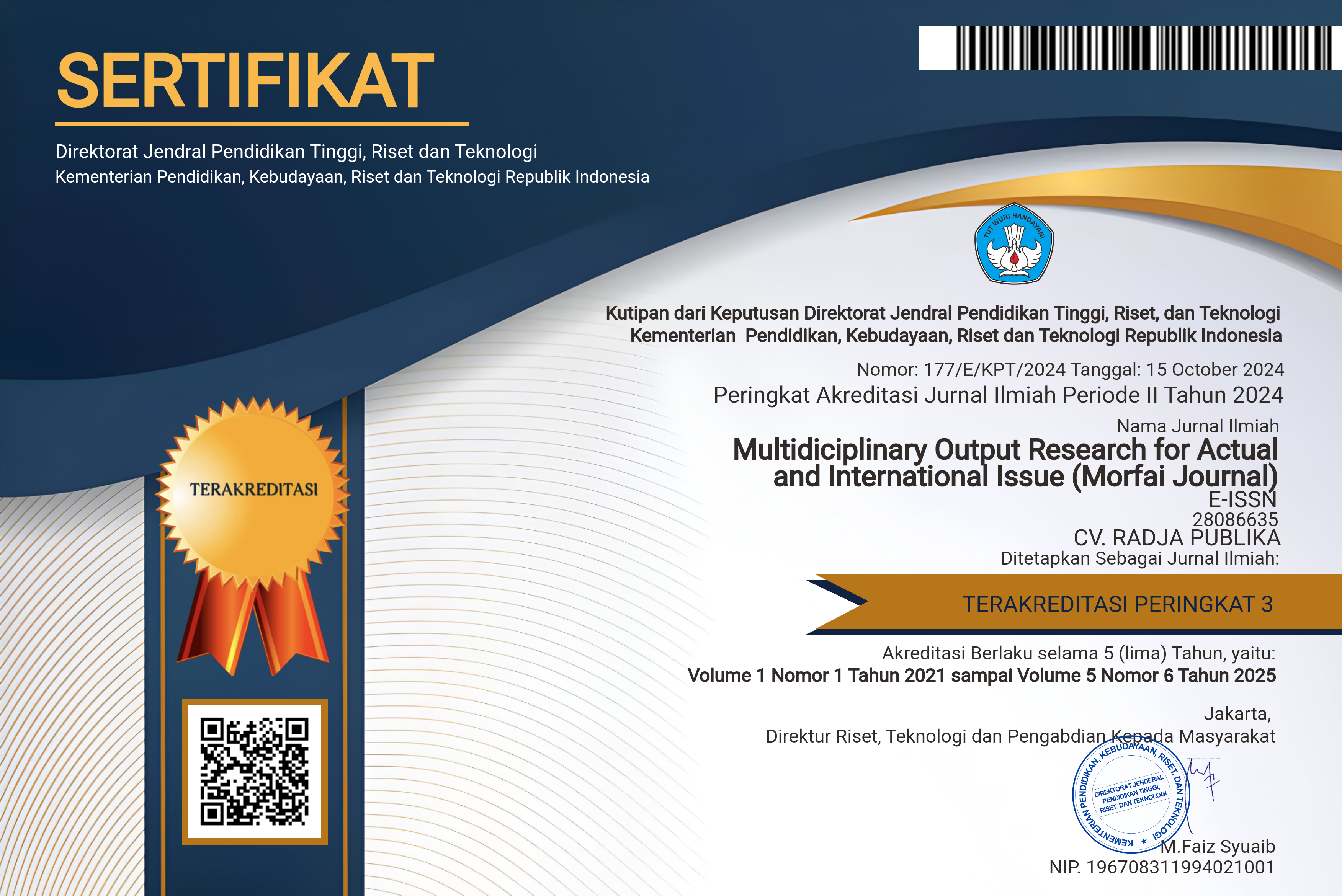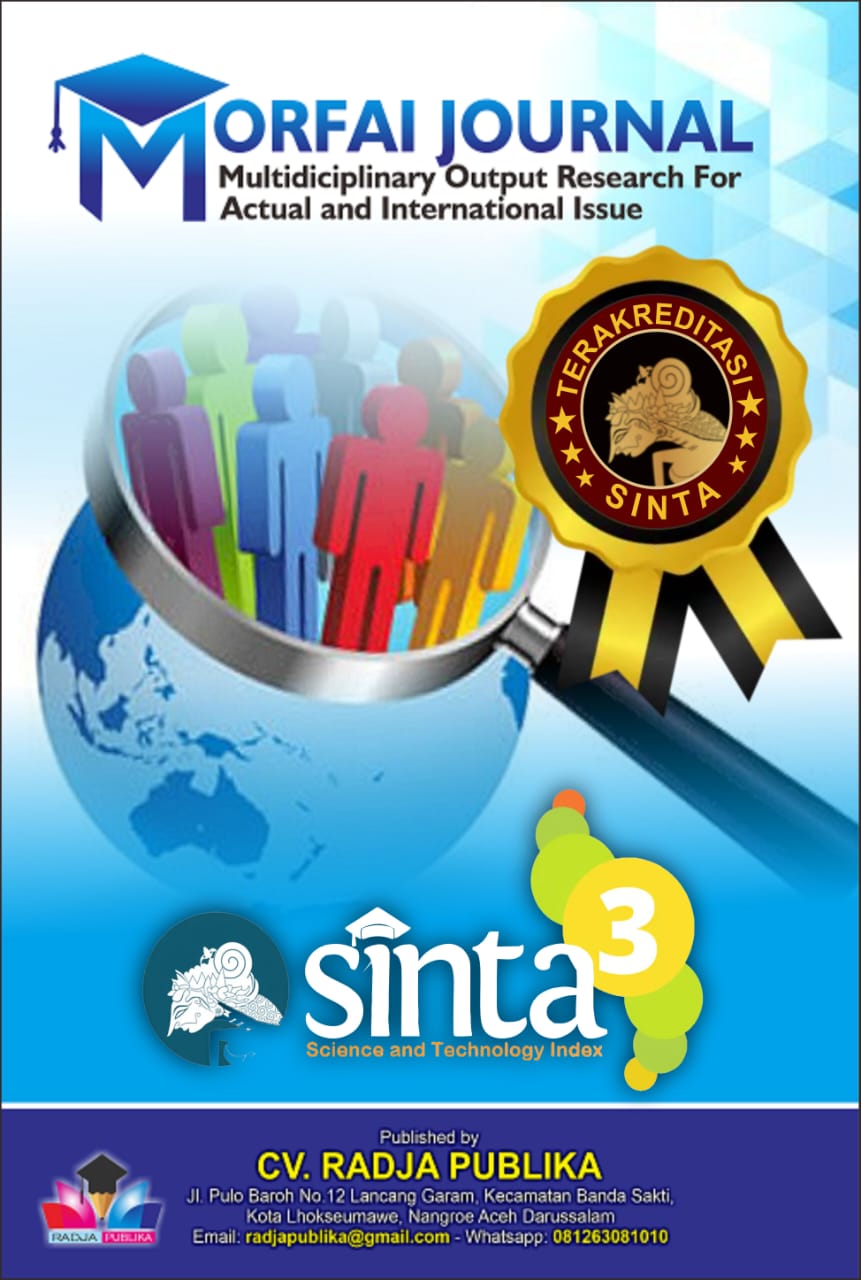TECHNOLOGICAL INNOVATION IN MODERN AGRICULTURE: ITS IMPACT ON PRODUCTIVITY AND SUSTAINABILITY
Main Article Content
Suslinawati
Sapto Wibowo
Redi Yana Kapisa
Technological innovation has become one of the main pillars in the development of modern agriculture. The use of tools such as drones, soil sensors, and automatic irrigation systems allows farmers to increase productivity through more efficient and measurable land management. In addition, this advanced technology also plays an important role in promoting environmental sustainability through environmentally friendly practices, such as more efficient water management and precision fertilisation. This article explores the positive impacts of implementing these technologies in increasing crop yields while minimising negative impacts on nature. With more equitable access to technology, especially for smallholder farmers, these innovations have great potential to ensure global food security while maintaining a balance between social, economic, and ecological aspects.
Abdullah, R. (2022). Adaptation of Traditional Islamic Rituals in a Cyber World: A Case Study of Virtual Communities. Journal of Islamic Studies, 48(1), 88–105. https://doi.org/10.1111/islamicstudy.virtualritual
Adams, L. (2022). Exploring Online Communities and the Preservation of Religious Traditions. Journal of Religious Connectivity, 44(3), 330–344. https://doi.org/10.5538/online.community.religion2022
Ahmed, Z. (2025). Digital Pilgrimages: Religious Tourism in the Age of Cyber Connectivity. Journal of Sociology and Religion, 45(3), 300–315. https://doi.org/10.1016/religious.tourism.digital2025
Aslan. (2019, January 17). Pergeseran Nilai Di Masyarakat Perbatasan (Studi tentang Pendidikan dan Perubahan Sosial di Desa Temajuk Kalimantan Barat) [Disertasi dipublikasikan]. https://idr.uin-antasari.ac.id/10997/
Aslan, A., & Ningtyas, D. T. (2025). DIALOG IDENTITAS: INTEGRASI TRADISI KEAGAMAAN LOKAL DI TENGAH ARUS BUDAYA GLOBAL. Prosiding Seminar Nasional Indonesia, 3(2), Article 2.
Aslan, & Putra, P. (2020). AGAMA & BUDAYA NUSANTARA PASCA ISLAMISASI; Dampak Islamisasi terhadap Agama dan Kebudayaan Lokal di Paloh, Kalimantan Barat.
Aslan, Sihaloho, N. T. P., Nugraha, I. H., Karyanto, B., & Zakaria, Z. (2020). Paradigma Baru Tradisi “Antar Ajung” Pada Masyarakat Paloh, Kabupaten Sambas. IBDA` : Jurnal Kajian Islam Dan Budaya, 18(1), 87–103. https://doi.org/10.24090/ibda.v18i1.3354
Brown, D. (2020). Cyber Culture and Its Impact on Religious Identity. International Journal of Religious Studies, 20(5), 145–160. https://doi.org/10.1015/cyberculture.religiousidentity2020
Campbell, H. (2021). Digital Religion: Understanding Religious Practices Online. Routledge. https://doi.org/10.1002/digital.religion2021
Carter, A. (2023). Online Spiritual Communities: Redefining Belief in the Digital Space. Religion & Technology Review, 12(1), 67–81. https://doi.org/10.1098/onlinespiritual.communities2023
Elisha, D. (2020). Faith on the Screen: Religion and Media in the Digital Era. Oxford University Press. https://doi.org/10.1210/faith.screen.religion2020
Green, E. (2024). Religious Rituals and Cyber Spaces: Bridging Tradition and Modernity. Journal of Global Religion Studies, 11(3), 211–226. https://doi.org/10.5678/religiousritual.cyberspaces2024
Harper, J. (2020). Digital Spirituality: How Social Media Shapes Faith and Practice. Religion in Modernity Journal, 30(2), 112–130. https://doi.org/10.1146/digital.spirituality2020
Johnson, M. (2020). The Role of Technology in Christian Worship During the Pandemic. Religion & Pandemic Studies, 3(1), 89–104. https://doi.org/10.1023/technology.christianworship2020
Jones, R. (2020). Cyberculture’s Impact on Interfaith Communication: Opportunities and Challenges. International Review of Religion and Media, 32(4), 215–230. https://doi.org/10.5678/interfaith.cyberimpact2020
Judijanto, L., & Aslan, A. (2024). GLOBALISATION AND THE EROSION OF TRADITION: MODELLING THE IMPACT OF GLOBAL CULTURE ON LOCAL CUSTOMS. MUSHAF JOURNAL: Jurnal Ilmu Al Quran Dan Hadis, 4(3), Article 3.
Kim, H. (2025). Cyber-Pilgrimage: A New Form of Devotion in the Digital Age. Religion, Tourism, and Cyber Studies Journal, 12(1), 95–108. https://doi.org/10.3333/cyber.pilgrimage2025
Levy, Y., & Ellis, T. J. (2006). A Systems Approach to Conduct an Effective Literature Review in Support of Information Systems Research. Informing Science Journal, 181–212.
Liu, J. (2023). Cyberenvironment for Worship: Traditional vs Online Practices. Interdisciplinary Studies in Religion, 19(2), 56–70. https://doi.org/10.1089/cyber.worship2023
Madri, M., Putra, P., & Aslan, A. (2021). The Values Of Islamic Education In The Betawar Tradition Of The Sambas Melayu Society. At-Tarbiyat :Jurnal Pendidikan Islam, 4(1), 36–45. https://doi.org/10.37758/jat.v4i1.251
Muhibah, S., & Arnadi, A. (2025). THE DEVELOPMENT OF ISLAMIC CIVILIZATION FROM PRE-ISLAMIC TO MODERN TIMES IN THE ARCHIPELAGO. INJOSEDU: International Journal of Social and Education, 2(2), 97–105.
Nguyen, M. (2022). The Virtualization of Ritual: A Study of Online Religious Ceremonies. Digital Humanities and Religion, 28(4), 305–320. https://doi.org/10.1080/virtual.religiousceremony2022
Patel, A. (2023). Virtual Reality in Hindu Ritual Practices: Opportunities and Ethical Challenges. Journal of South Asian Religion Studies, 33(2), 145–159. https://doi.org/10.1091/vr.hindu.ritual2023
Robinson, C. (2021). Digitizing Faith: The Growth of Religious Apps and Their Impact on Believers. Digital Religion Journal, 7(3), 175–191. https://doi.org/10.4456/digitizing.faith2021
Sanggenafa, C. O. I., & Aslan, A. (2025). THE ROLE OF ULAMA IN CRIMINAL POLICY FORMATION IN INDONESIA. INJOSEDU: International Journal of Social and Education, 2(5), Article 5.
Shah, R. (2025). Pilgrimage in Cyberspace: Reflections on Virtual Religious Tourism. Journal of Religious Tourism Studies, 45(3), 415–430. https://doi.org/10.1016/pilgrimage.cyberspace2025
Singh, A. (2022). Virtual Faith: The Role of the Internet in Religious Transformation. Springer. https://doi.org/10.2003/virtualfaith.religion2022
Smith, J., & Taylor, S. (2023). Religious Practice in a Digital Space: Exploring Online Rituals in Cyberculture. Journal of Digital Religion and Culture, 15(2), 127–145. https://doi.org/10.1234/journal2023.digitalreligion
Torraco, R. J. (2016). Writing Integrative Literature Reviews: Guidelines and Examples. Human Resource Development Review, 356–367.
Torres, M. (2025). Cyberculture and Its Role in Youth Religious Identity Formation. Journal of Sociology and Faith, 16(4), 211–227. https://doi.org/10.2543/youth.religiousidentity2025
Wahib, R., & Fatema, A. (2021). Cyberculture and Religious Innovation: A Cross-Cultural Perspective. Academic Press. https://doi.org/10.54321/book.cyberreligion2021
Wang, C. (2021). Cyberculture in Buddhism: The Expansion of Meditation Apps. Asian Religious Studies Journal, 25(4), 315–329. https://doi.org/10.1110/cyber.buddhism.meditation2021
Webster, J., & Watson, R. T. (2002). Analyzing the Past to Prepare for the Future: Writing a Literature Review. MIS Quarterly, xiii–xxiii.
Williams, L. (2021). Social Media and Religious Practices: Transformation in the Digital Age. Sociology of Religion Journal, 56(3), 187–202. https://doi.org/10.1017/socialmedia.religion2021









